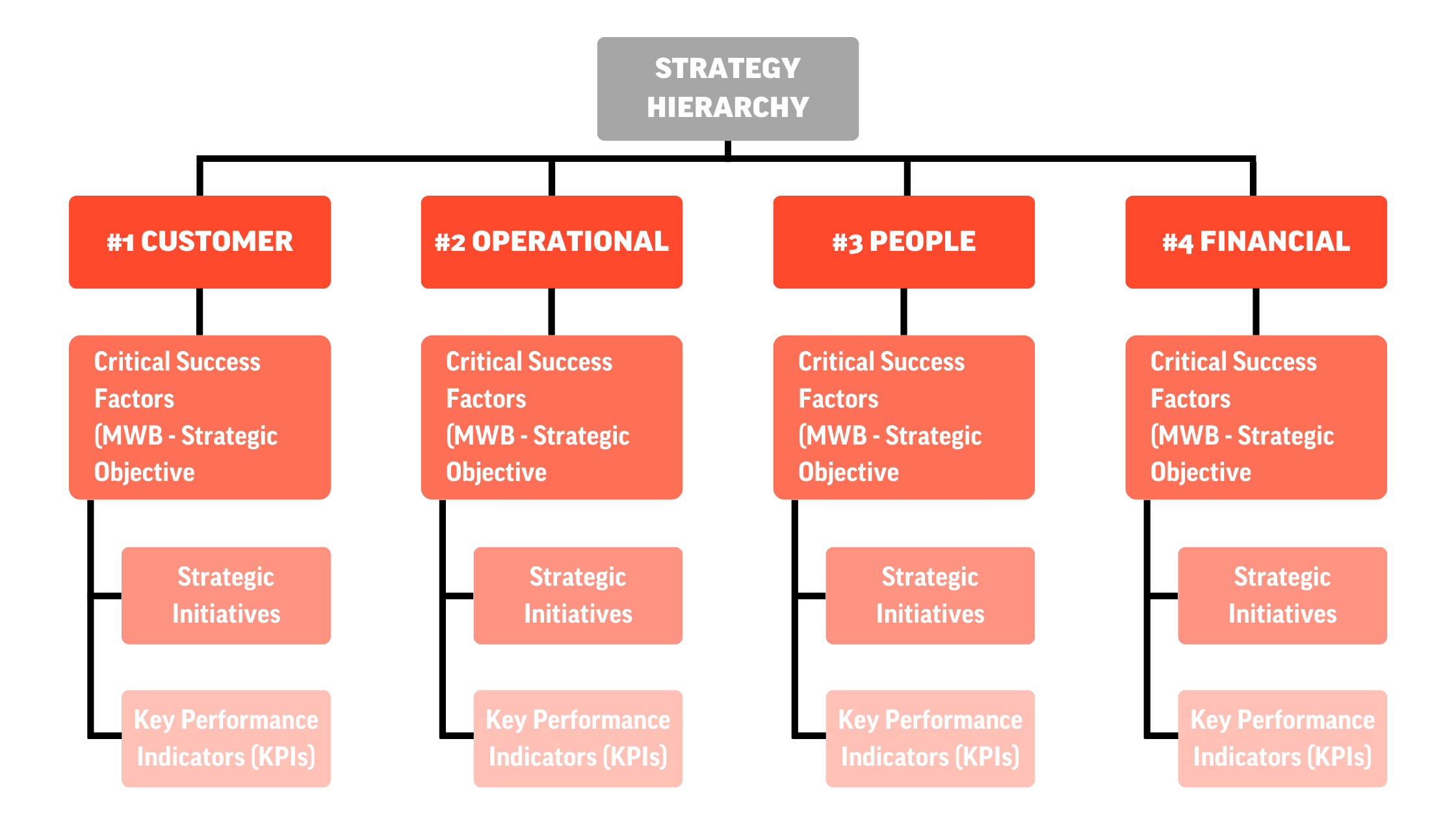Strategy Evaluation: How to evaluate your strategy
.png)
Constant strategy evaluation is very important if you want to succeed at implementing and execution your organization's strategies.
When considering the issue of constant evaluation of strategy there are a few questions which are helpful to consider:
1. Does the strategy exist?
2. Are the most important strategic issues clearly defined and stated?
3. Does the strategy lend itself to constant review and adaptation?
4. Is there a management process in place to secure actionable and flexible strategic intent?
Constant strategy evaluation is important
The importance of constant and effective strategy evaluation seems obvious in these times of increased volatility, uncertainty and rapid change that organizations are facing. However, it is too often the case that strategies are developed as a one-off process and end in the 4 P’s of Strategy Syndrome: Print, Publish, Preach and Pray.
In reality, developing the strategy is an ongoing process which never stops. Increasingly strategy needs to be developed ‘on the go’ which means it needs to be one of the mainstream tasks of management, to constantly monitor progress and re-evaluate the strategy in light of progress and external factors.
What is the cornerstone of effective strategy evaluation?
Different aspects of the strategy need to be evaluated. In his book, Good Strategy – Bad Strategy, Richard Rumelt made a strong case for simplicity when he stated;
“Despite the roar of voices wanting to equate strategy with ambition, leadership, “vision“, planning or the economic logic of competition, strategy is none of these. The core of strategy work is always the same: Discovering the critical factors in a situation and designing a way of coordinating and focusing actions to deal with those factors.”
Strategy needs to be evaluated with reference to its ability to engage the organization horizontally and vertically. It has to be probed for simplicity and clarity, but also for its relevance given the mission and vision of the organization. One should be able to extract certain key focus areas from the mission and vision and they should be reflected in the overall strategic objectives and focus areas.
What corrective measures might a firm take during strategy evaluation?
A simple and relevant strategic framework is key to building an effective strategy that is effective, sustainable and agile. In order to engage, the strategy has to provide clear indication of what is most important. A mission statement with a compelling vision and shared values are necessary as a guide for strategy, but not enough. In other words, a mission statement is not a strategy; the strategy is what is needed for the organization to live up to its mission, vision and values. One should be able to read the strategy as an organization chart or a hierarchy. If not, chances are the strategy is unclear. The first level of the chart are called different names such as Strategic Pillars, Strategic Focus Areas, Company Objectives, Dimensions, Wildly Important Goals and more. Whatever they are called they always represent the same element of the strategy, i.e. the top level goals representing the overall direction. If these are not clear, there is no strategy.
Second item to consider is whether the overall pillars or objectives are broken down in specific measurable goals. These have different names, but the intention is to qualify the pillars or focus areas with specific key areas with measurable success, often called Critical Success Factors or Key Results. What one should be specifically evaluating here are the so called Key Performance Indicators (KPIs). Lack of meaningful KPIs is most often the major weakness of strategy. Organizations generally struggle with this part, especially when it comes to non-financial KPIs which cannot be extracted from the organization's database on an ongoing basis.

Strategic frameworks may differ as to whether they separate the success factors on one hand and the KPIs on the other hand, others like the OKR methodology combine both. The merit of having these separated is that, while you can state your measurable goal as a Critical Success Factor linked to a Pillar or Strategic Objective, you can keep the measurement of the progress towards the goal as a separate item and link the two together.
Evaluating KPIs
This is usually the most important part of the overall strategy evaluation. Without meaningful KPIs, it can be very difficult to monitor progress. In recent years project oriented strategy implementation has increased in popularity. This is understandable considering that in absence of measurable results, people resort to measuring only the progress of projects as an indicator of progress. The danger here is that, although the overall progress of projects or programs can be measured, it will be hard to link that particular progress to the overall intended results of the strategy, and thus you might end up doing everything as intended, but with failed strategy.
Actionable Strategies
The final part of the overall strategy evaluation is considering whether the strategy is actionable in terms of accountability and coherent and clear methodology throughout the organization. And how to define actions, prioritize and link to the goals or success areas of the strategy.
Initiatives will have to be defined in terms of results (Specific, Measurable, Attractive, Realistic and Time based (S.M.A.R.T). They should be clearly prioritized and justified in terms of the strategy. There should always be a link between initiatives with a measurable goal as represented in the relevant KPI and one should be able to measure at the same time the progress towards the goal as well as the progress of the initiative. The best business strategy should always lend itself to easy and regular review with respect to the two critical elements; goals and actions. Without monitoring the two simultaneously, it is impossible to confirm whether actions are working or not and make timely and necessary changes in case progress is not reflected in the overall critical results to be achieved.
Actionable strategies in this sense are the basis for making the strategy agile. Without agility chances are the strategy will not work regardless of all of the above, simply because things change fast and if not adopted and adapted the strategy will quickly be outdated. Keep up with your strategy evaluation with the recent strategy execution technology!









.png?width=80&name=Team%20Alignment%20(1).png)
.png?width=80&name=Strategy%20Evaluation%20(1).png)